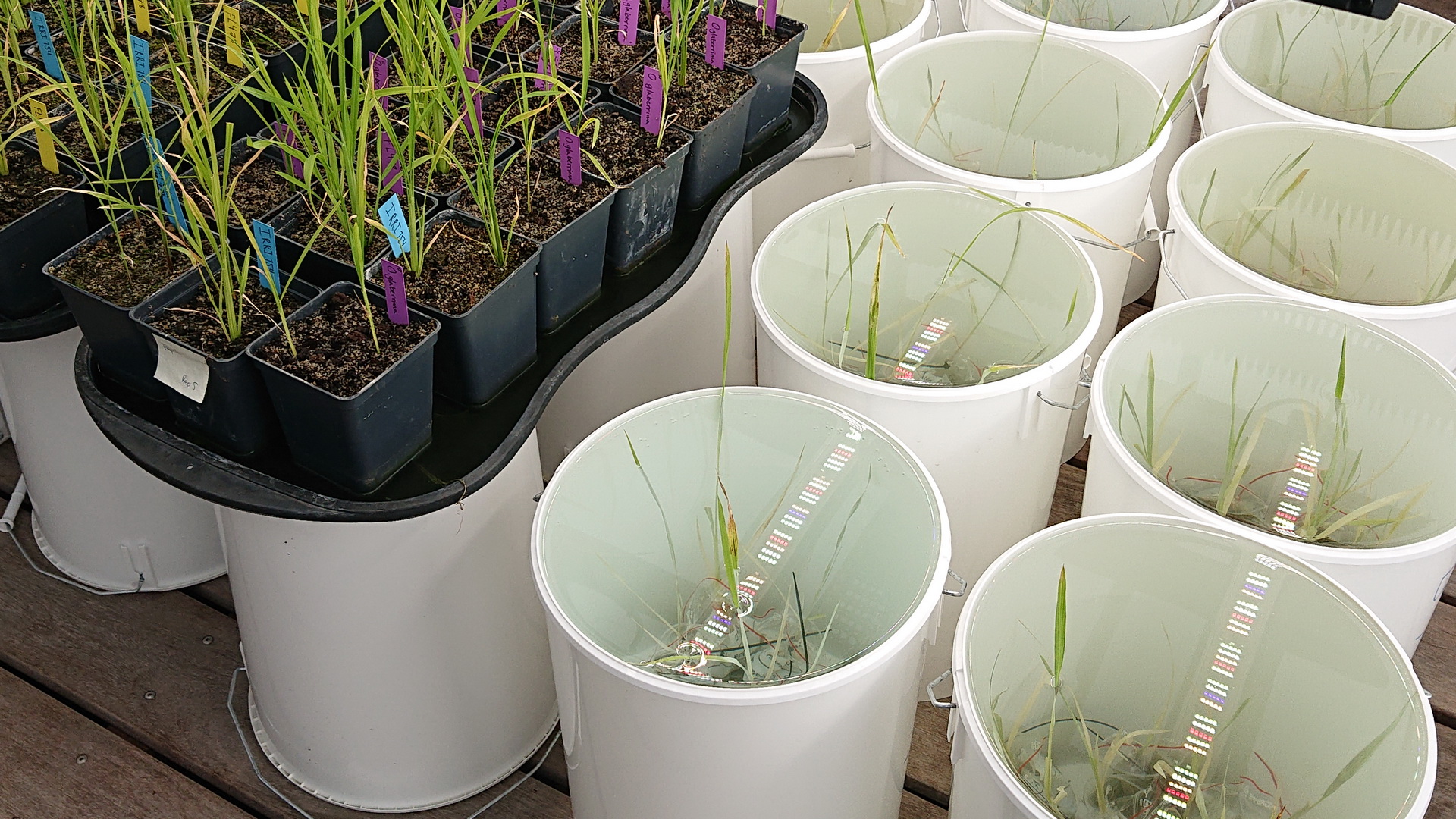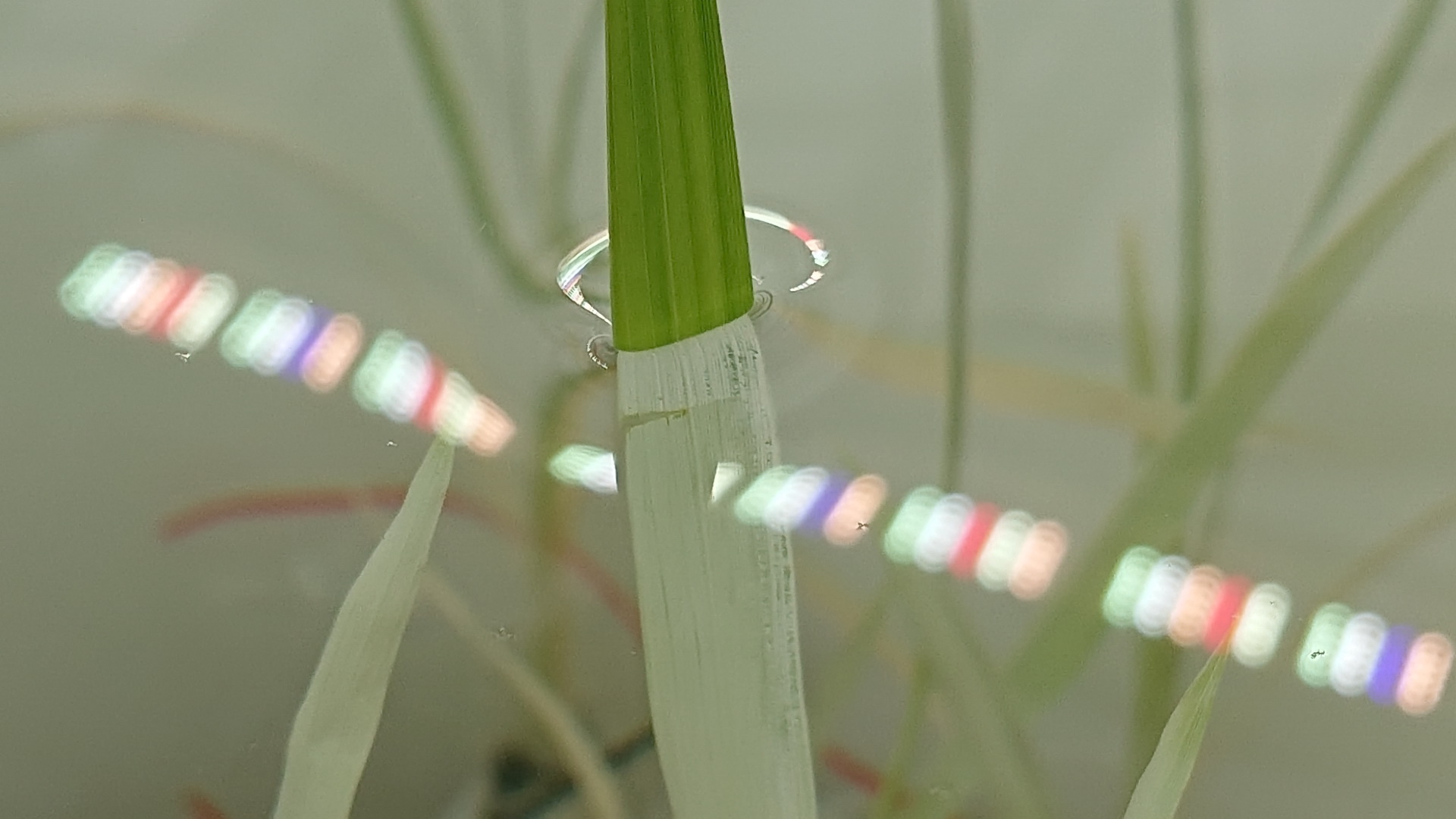Gas film retention on superhydrophobic rice leaves during submergence
Two project students are working with submergence tolerance of wild rice species and some interesting crossings between O. sativa and O. glaberrima. Last week, the plants were old enough for the treatment to commence so the plants were submerged in tall containers. As an add-on to the project, we have decided to allow the plants to elongate in order to escape submergence. Some plants do and some do not. Some plants also respond with a high degree of stress and we already now observe leaf yellowing of the target leaves.
Nevertheless, the main objective of these experiments are to assess gas film retention time during submergence and how the presence, or absence, of leaf gas films influence underwater photosynthesis. The many data have not yet been fully analysed but we will keep you informed on this blog once we have something to share.

The experimental set-up with submerged plants in tall containers but these are "open top" so that the plants are allowed to elongate in case they have an ability to do so.

In this close-up, the gas film is visible as a silvery sheen on the submerged part of the leaf. The other part has elongated and restored contact to the atmosphere above, a phenomenon referred to as snorkelling.
Nevertheless, the main objective of these experiments are to assess gas film retention time during submergence and how the presence, or absence, of leaf gas films influence underwater photosynthesis. The many data have not yet been fully analysed but we will keep you informed on this blog once we have something to share.
The experimental set-up with submerged plants in tall containers but these are "open top" so that the plants are allowed to elongate in case they have an ability to do so.
In this close-up, the gas film is visible as a silvery sheen on the submerged part of the leaf. The other part has elongated and restored contact to the atmosphere above, a phenomenon referred to as snorkelling.
